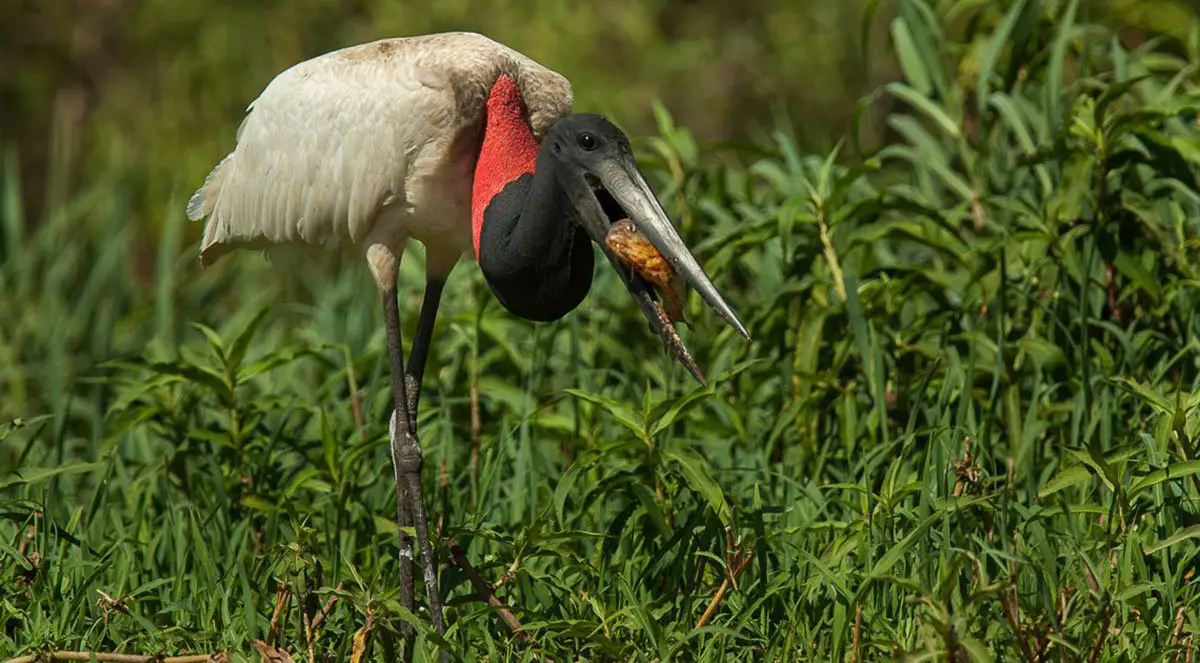Recent observations in Costa Rica have sparked both excitement and concern among wildlife officials and conservationists. The Arenal Tempisque Conservation Area (ACAT-SINAC) reported an uptick in sightings of the Jabiru, a significant but endangered bird, during February and March, particularly in the cantons of Bagaces, Cañas, and Abangares. This surge in visibility of one of Costa Rica’s largest birds is a double-edged sword, prompting immediate investigations into emerging threats to their wellbeing.
The Plight of the Jabiru
The Jabiru, known for its impressive stature and striking appearance, is native to Guanacaste and the Northern Caribbean regions of Costa Rica. It is one of the tallest flying birds found in Central and South America but is now facing severe threats that could jeopardize its survival. Recent field visits by SINAC officials revealed troubling signs, including slight plumage damage likely caused by interactions with wire fences and other barriers as these birds navigate the diverse aquatic landscapes of Guanacaste province.
Conservation Efforts Underway
In response to these concerning observations, MINAE-SINAC, in collaboration with wildlife experts from the Las Pumas de Cañas Rescue Center and Universidad Estatal a Distancia (UNED), has initiated a thorough investigation to identify the underlying causes of these damages. The goal is to understand the broader impacts of these interactions on the Jabiru population and implement strategies to mitigate potential risks.
Community Involvement in Bird Protection
Alexander León, Director of ACAT, emphasized the critical role of the Jabiru in the region’s biodiversity and the need for heightened conservation efforts. “It is crucial that we maintain a vigilant watch over and protect this vital species,” León stated, urging the community to support ongoing conservation initiatives. In 2021, the Municipal Government of Bagaces further highlighted the importance of the Jabiru by declaring it a bird of cantonal interest, underscoring its significance to the local ecosystem and cultural heritage.
The Challenges Facing the Jabiru
With an estimated population of no more than 100 individuals in the country, the Jabiru’s situation is precarious. Historically common in the wetlands of Bajo Tempisque, the species now suffers from accelerated habitat degradation, water pollution, and the specific vulnerabilities tied to its natural history. These challenges make the Jabiru highly susceptible to environmental changes and human activities.
Call to Action for Public Support
SINAC has established communication channels for the public to report any activities that may harm the Jabiru, such as hunting, trafficking, or disturbing their nests. By dialing 1192 or visiting the SITADA website (www.sitada.go.cr), concerned citizens can take active roles in safeguarding this majestic species. This proactive approach aims to enhance protective measures for the Jabiru and ensure its presence in Costa Rica’s skies for generations to come.
Looking Ahead: The Future of the Jabiru in Costa Rica
The rise in Jabiru sightings is a reminder of the delicate balance required to protect and preserve Costa Rica’s unique wildlife. As conservationists and researchers work to secure the future of the Jabiru, community engagement and international support will be crucial. Through collaborative efforts, there is hope that this iconic bird will not only survive but also thrive in its natural habitat, continuing to inspire and amaze all who have the chance to witness its grandeur.
The plight of the Jabiru is a rallying call for conservation, urging us to reflect on the impact of human activities on the world’s biodiversity and to take action where we can. By supporting conservation initiatives and promoting environmental awareness, we contribute to a legacy of biodiversity that enriches our planet.

